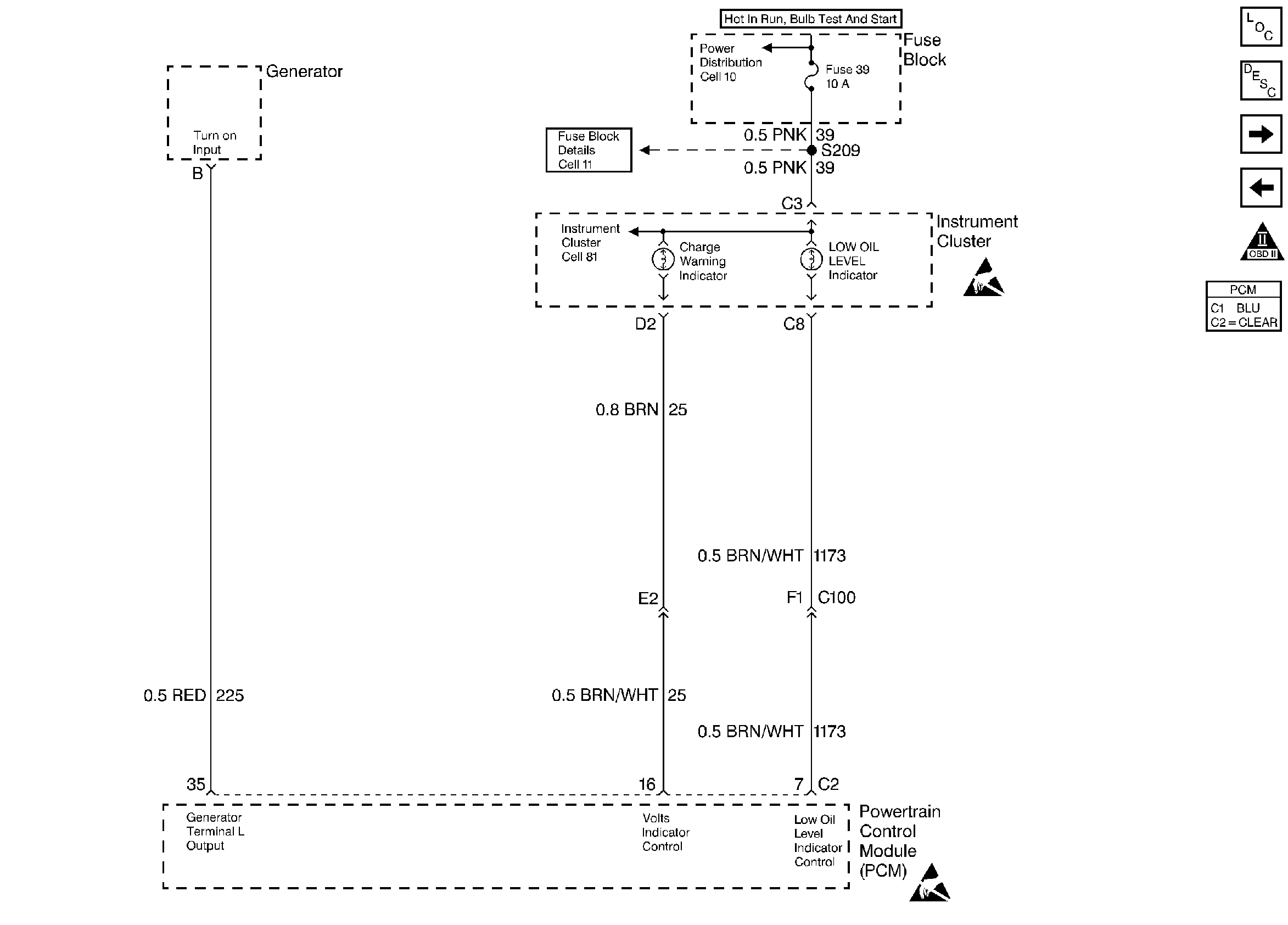Refer to
GEN Control, Low Oil Lamp, Volts Lamp

.
Circuit Description
Output Driver Modules (ODMs) are used by the PCM to turn ON many of the current-driven devices that are needed to control various engine and Transaxle functions. Each ODM is capable of controlling up to 7 separate outputs by applying ground to the device which the PCM is commanding ON.
Unlike the Quad Driver Modules (QDMs) used in prior model years, ODMs have the capability of diagnosing each output circuit individually. DTC P1672 set indicates an improper voltage level has been detected on ODM D output 2, which controls the Low Engine Oil Level Lamp.
Conditions for Setting the DTC
| • | Ignition is ON. |
| • | An improper voltage level has been detected on ODM D output 2 (the low engine oil level lamp control circuit). |
| • | Above conditions for at least 30 seconds. |
Action Taken When the DTC Sets
| • | The PCM will not illuminate the MIL. |
| • | The PCM will store conditions which were present when the DTC set as Fail Records data only. This information will not be stored as Freeze Frame data. |
Conditions for Clearing the MIL/DTC
| • | A history DTC P1672 will clear after 40 consecutive warm-up cycles have occurred without a fault. |
| • | DTC P1672 can be cleared by using the scan tool Clear Info function or by disconnecting the PCM battery feed. |
Test Description
Number(s) below refer to the step number(s) on the Diagnostic Chart.
-
Normally, ignition feed voltage should be present on the output driver circuit with the PCM disconnected and the ignition turned ON.
-
Checks for a shorted component or a short to B+ on the output driver circuit. Either condition would result in a measured current of over 500 milliamps. Also checks for a component that is going open while being operated, resulting in a measured current of 0 milliamps.
-
Checks for a short to voltage on the low engine oil level lamp control circuit.
-
This vehicle is equipped with a PCM which utilizes an Electrically Erasable Programmable Read Only Memory (EEPROM). When the PCM is being replaced, the new PCM must be programmed.
Step | Action | Value(s) | Yes | No |
|---|---|---|---|---|
1 | Was the Powertrain On-Diagnostic System Check performed? | -- | ||
Is voltage near the specified value? | B+ | |||
Does the current reading remain between the specified values? | 0.05-0.5 Amp (50-500 mA) | |||
Is voltage at the specified value? | 0 V | |||
5 | Locate and repair short to voltage in the low engine oil level lamp control circuit (refer to Repair Procedures in Electrical Diagnosis Section 8A-5). Is action complete? | -- | -- | |
6 | Check the ignition feed fuse for the instrument panel indicators. Is the fuse blown? | -- | ||
7 |
Is action complete? | -- | -- | |
8 |
Is voltage near the specified value? | B+ | ||
9 |
Was a problem found? | -- | ||
10 |
Was a problem found? | -- | Go to Instrument Panel in Electrical Diagnosis | |
11 |
Does the test light flash ON and OFF? | -- | Refer to Diagnostic Aids | |
12 |
Was a problem found? | -- | ||
13 | Locate and repair open in the ignition feed circuit to the I/P indicators (refer to Repair Procedures in Electrical Diagnosis Section 8A-5). Is action complete? | -- | -- | |
Replace the PCM. Important: The replacement PCM must be programmed. Refer to Powertrain Control Module Replacement/Programming . Is action complete? | -- | -- | ||
15 |
Does the scan tool indicate DTC P1672 failed this ign? | -- | System OK |
